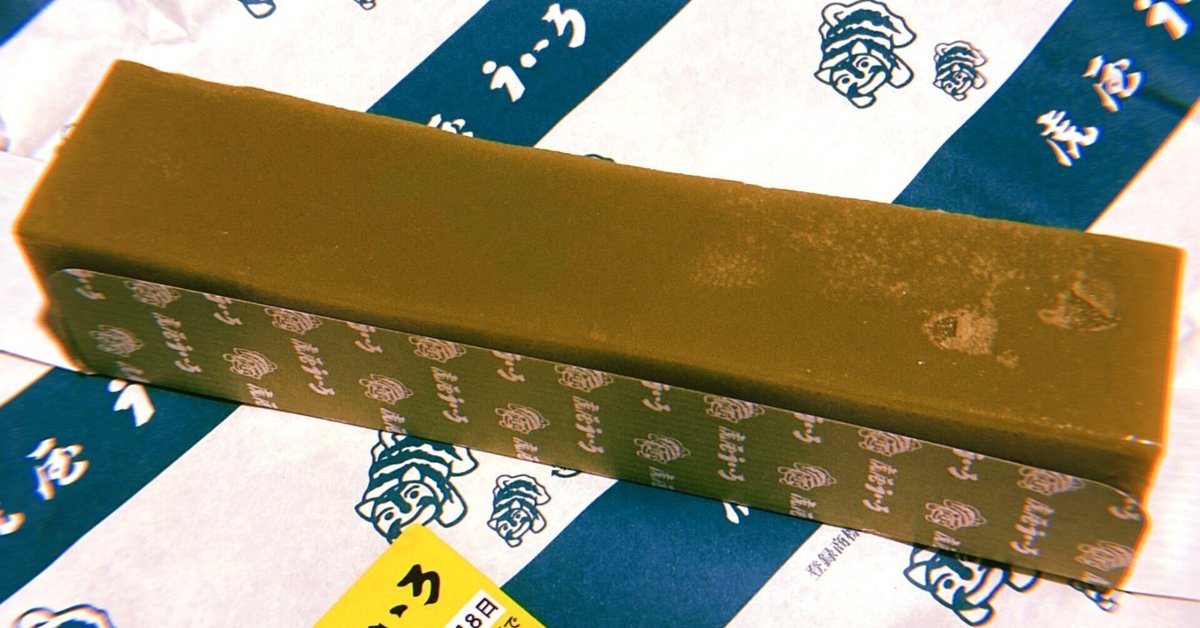
Dig Japan vol.12 “Uiro (ういろう)”
Dig Japan is a series in which I research and introduce in English topics related to traditional Japanese culture that interest me. In this article, I will introduce uiro. Uiro is wagashi made by kneading flour such as non-glutinous rice flour or wheat flour with sugar and hot water, pouring it into a mold, and steaming it. Various ingredients such as bean paste and matcha can also be added. Let's unravel its origin.

There are two theories about the origin of uiro: one is that its color (black) resembles that of “Uiroyaku,” hence the name, and the other is that it was a confection made to mask the taste of Uiroyaku. Uiroyaku, also known as “Tochinko,” is a pill that became a specialty of Odawara, Kanagawa Prefecture, after the Uiro family presented it to Hojo Ujitsuna.
It is mainly used for gastrointestinal ailments, but it also has the effect of clearing phlegm and eliminating bad breath, and is said to have been used as an emergency medicine for soldiers on the battlefield. As for the former theory, a reference to uiro as a confectionery can be found in “Wakan sansai zue” which is Terajima Ryoan's massive Edo-period dictionary published in 1712.
The latter theory is that it originated from a confectionery that Chen Sokei's son, Soki served as a palate cleanser of Uiroyaku. After the fall of the Yuan Dynasty, Sokei, who was a doctor and important official during the Yuan Dynasty, fled to Japan and lived in Hakata. He became a naturalized Japanese citizen during the Muromachi period, and his descendants took the surname Uiro.
Sokei was a multi-talented man, especially knowledgeable about prescription, so Ashikaga Yoshimitsu asked him to move to Kyoto, but he did not respond and entered into the priesthood in Fukuoka. Later, Soki moved to live in Kyoto, and from then on the family practiced medicine for generations and became known as the Uiro family and produced medicines including Tochinko.

Considering the above, the birthplace of uiro in Japan is unknown if the former theory is adopted, and it is either Hakata where Sokei, the first generation of the Uiro family lived, or Kyoto, where Soki lived, if the latter theory is adopted. Incidentally, a stone monument marking the place where uiro was introduced was erected in 1987 at Myorakuji Temple in Fukuoka City, where Sokei lived.
Recipes for uiro spread throughout Japan during the Edo period, and depending on the shop and region, there is a wide variety of ingredients, production methods, tastes, textures, and appearances. Currently, it is treated as a synonym for Nagoya's famous sweets, but uiro from Odawara, Kyoto, and Yamaguchi are also relatively well known.
Uiro is often sold in a box like yokan at wagashi shops, and we can find it in a triangular pack at supermarkets. There are also some Japanese sweets that use uiro, such as "Minazuki," a triangular wagashi that is traditionally eaten in Kyoto at the summer purification ceremony in June, which is made of white uiro topped with Dainagon azuki beans.
This article was written by 𝐡𝐢𝐫𝐨𝐤𝐨, working as a freelance translator and PR for overseas apparel brands in Japan, with the aim of broadening her own knowledge of traditional Japanese culture and spreading it to the world.
いつも読んでくださってありがとうございます☺︎いただいたサポートは、記事のクオリティ向上に活用させていただきます。応援よろしくお願いします❦
